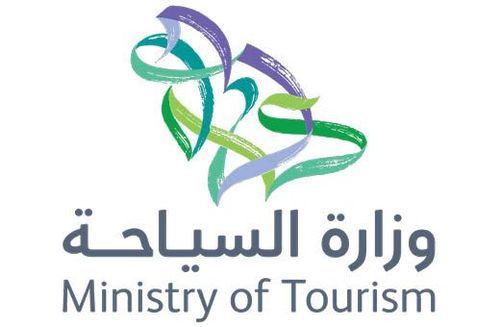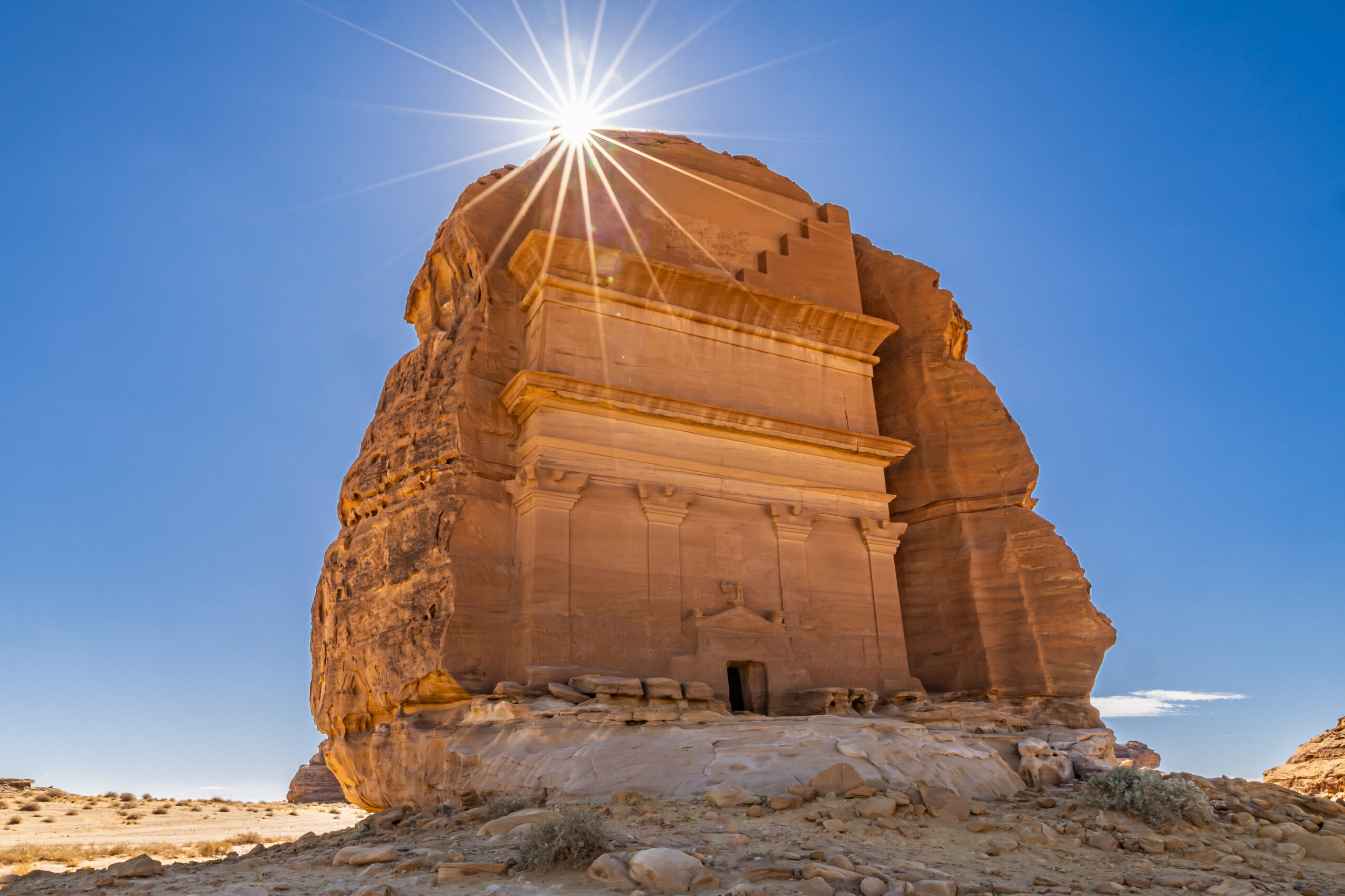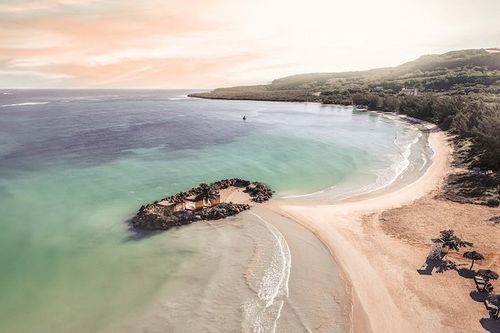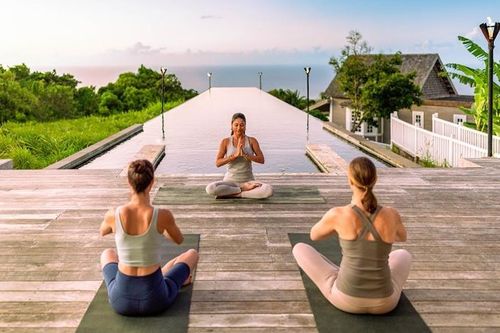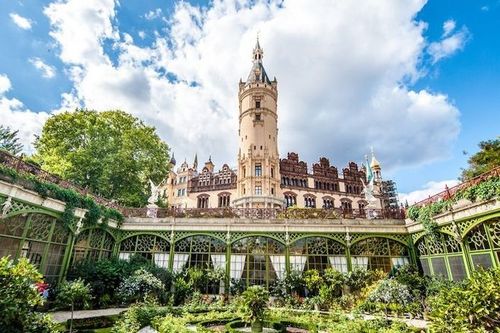Where travel agents earn, learn and save!
News / Three things to know about Saudi Arabia’s first UNESCO site: Alula
Once rarely visited, now central to Saudi Arabia's major tourism push
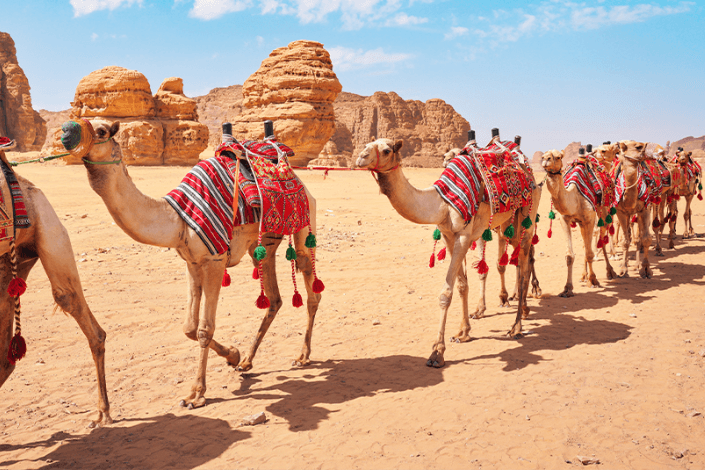
Photo: One mode of transportation in Alula, Saudi Arabia
It’s an undeniable, centuries-old feat of human achievement and a cultural masterpiece that ranks with some of the world’s most renowned historic sites – but until recently, only a relative handful of people had visited Alula.
The UNESCO World Heritage Site and oasis city sits at the centre of Saudi Arabia’s major, well-funded tourism push (a push that was highlighted in this 2023 coverage of Saudi Arabia).
Here are three things to know about one of this emerging tourism destination’s top tourist attractions, Alula …
You’ll find thousands of years of history
If you’ve visited Petra in Jordan, you’ll be a bit familiar with the history here, which dates back to the 6th century BCE.
Set on the Incense Route, the wealth and goods that flowed from India and the Persian Gulf to Europe came right through this oasis. They built a sophisticated civilization.
The various historic sites are spread out through the desert, linked by a series of newly paved roads.
Arguably the two biggest historic attractions are the Old Town and Hegra.
The former, a settlement of mud brick buildings connected to an impressive fort, dates to the 12th century. While its recent renovation gives perhaps a slightly-too-polished finish, a stroll down Market Street gives a little sense of what life was like here 1,000 years ago.
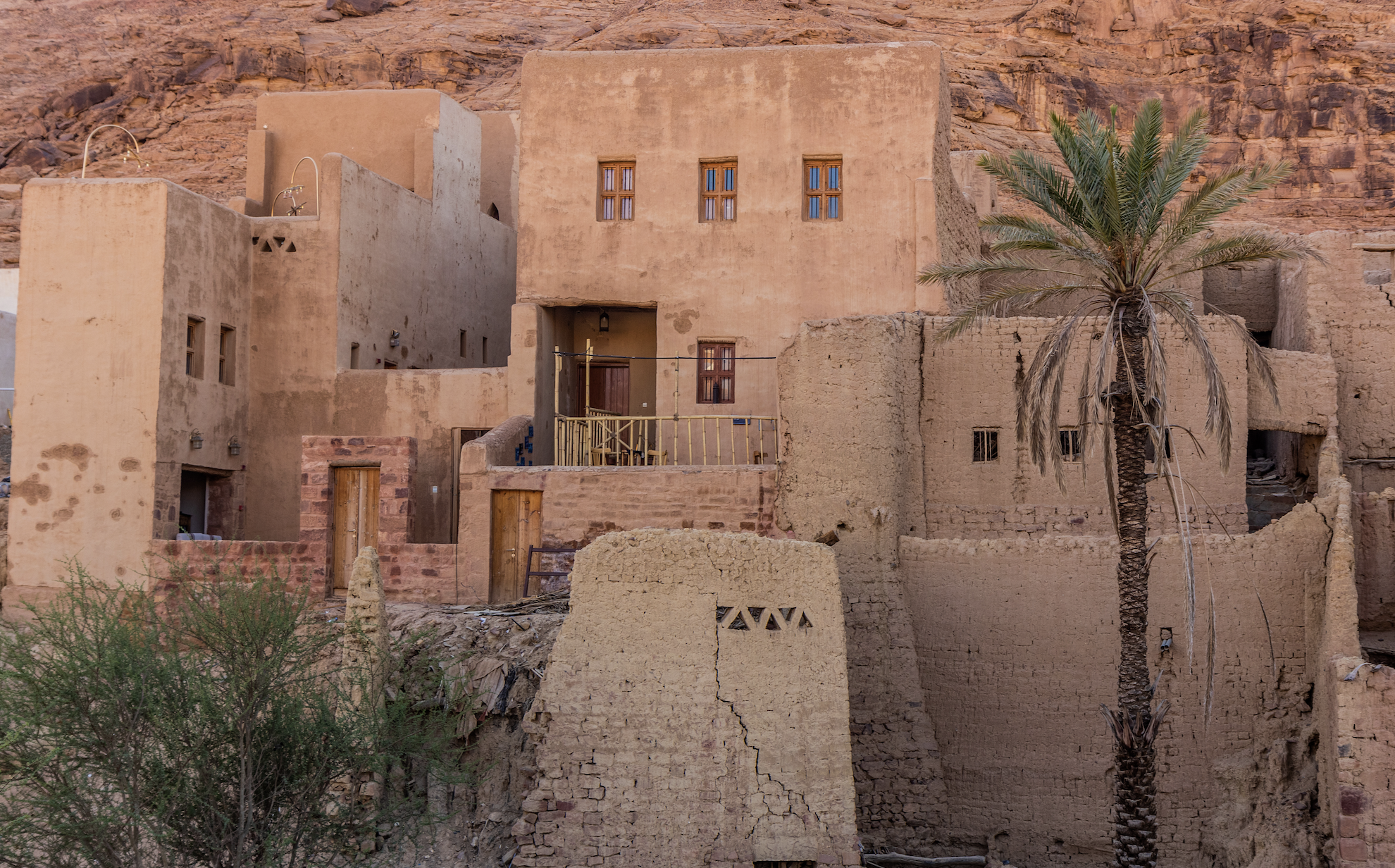
Mud houses in AlUla’s old town
I recommend exploring in the evening, when the place lights up and really comes alive – shops stay open till 11 p.m., and restaurants even later than that. The smell of incense and soft light filters out of the stores, and you can dine on watermelon salad and lamb mugalgal and other regional dishes at a rooftop restaurant.
The latter, Hegra, is the star of the show, and the heart of the Heritage Site. On my visit, I took something called the Vintage Tour. A guide named Atif showed me around a few of the 111 tombs in an open-topped, vintage Land Rover. The history: starting in the First Century BCE, the Nabateans built Hegra as their second capital (Petra was the first).
Here, they buried their elites in elaborate tombs that reflected their power and wealth – all the more impressive when you consider the technology available at the time. “They used very simple tools – hammer and pickaxe,” my guide noted. The sites are super-impressive, but perhaps my favourite part of the tour were Atif’s stories from his youth, growing up in the area in a Bedouin shepherding family.
Hotels are plentiful, including many upscale options
In addition to holiday home rentals, you’ll find about a dozen options for accommodation. Most are in the luxury category (and price range). They range from the glimmering Insta-friendly airstream trailers at Caravan by Habitas, to a brand-new heritage hotel in the heart of Old Town.
On a recent visit, I laid my head in two of the most prominent spots. Banyan Tree is one of the top five-star properties. A total of 47 villas are scattered amongst the canyons and rock formations. Transfers to your room by golf cart can be a bit lengthy, but once you’re there, the privacy feels total. My one-bedroom villa was roomy and beautiful, with a small private pool and cushy outdoor seating area. A highlight: a Bedouin dinner that began with tea around a roaring fire and finished with a big meal around a long communal table in a large tent, augmented by excellent conversation with other guests.
After Banyan Tree, I transferred to Our Habitas, which has an earthier feel and sustainable focus. My Celestial Villa was still huge, with bright, floor-to-ceiling windows. While I didn’t have time to take advantage, the resort offers a long list of activities available to guests, from yoga to meditation to canyon trekking. The spa is top-notch. And the infinity pool, a long splash of aquamarine cradled by red sandstone all around, is very dreamy.
Nabatean rock cut ruins at Hegra in AlUla
Beyond history, there’s culture, beauty and more
Alula (which is sometimes spelled Al-Ula and often stylized AlUla) isn’t just historical sites. My visit included a guided walk around an ecological garden that included various demonstrations (including how to climb a coconut palm). Guides give information about the lush vegetation in the oasis, including the fact that citrus has been grown here since Nabatean times.
And Maraya, the world’s largest mirrored-glass building, is worth a visit. Just for a very unique photo, or for a cultural evening – the 500-seat concert hall inside hosts various performances.
You’ll also find a number of places to just chill out and enjoy the view (and maybe a bite). OKTO is set atop the Harrat Viewpoint, with sweeping vistas of the town and desert below. You’ll find a welcome, dependable breeze on a hot day, as well as a nice menu of Greek dishes. And Elephant Rock – a sandstone formation that really does look like a massive pachyderm – is an excellent place to enjoy a sunset. Grab a burger at the food truck and a spot in one of the sunken fire pits, and watch the desert around you warm from brown to red and gold.
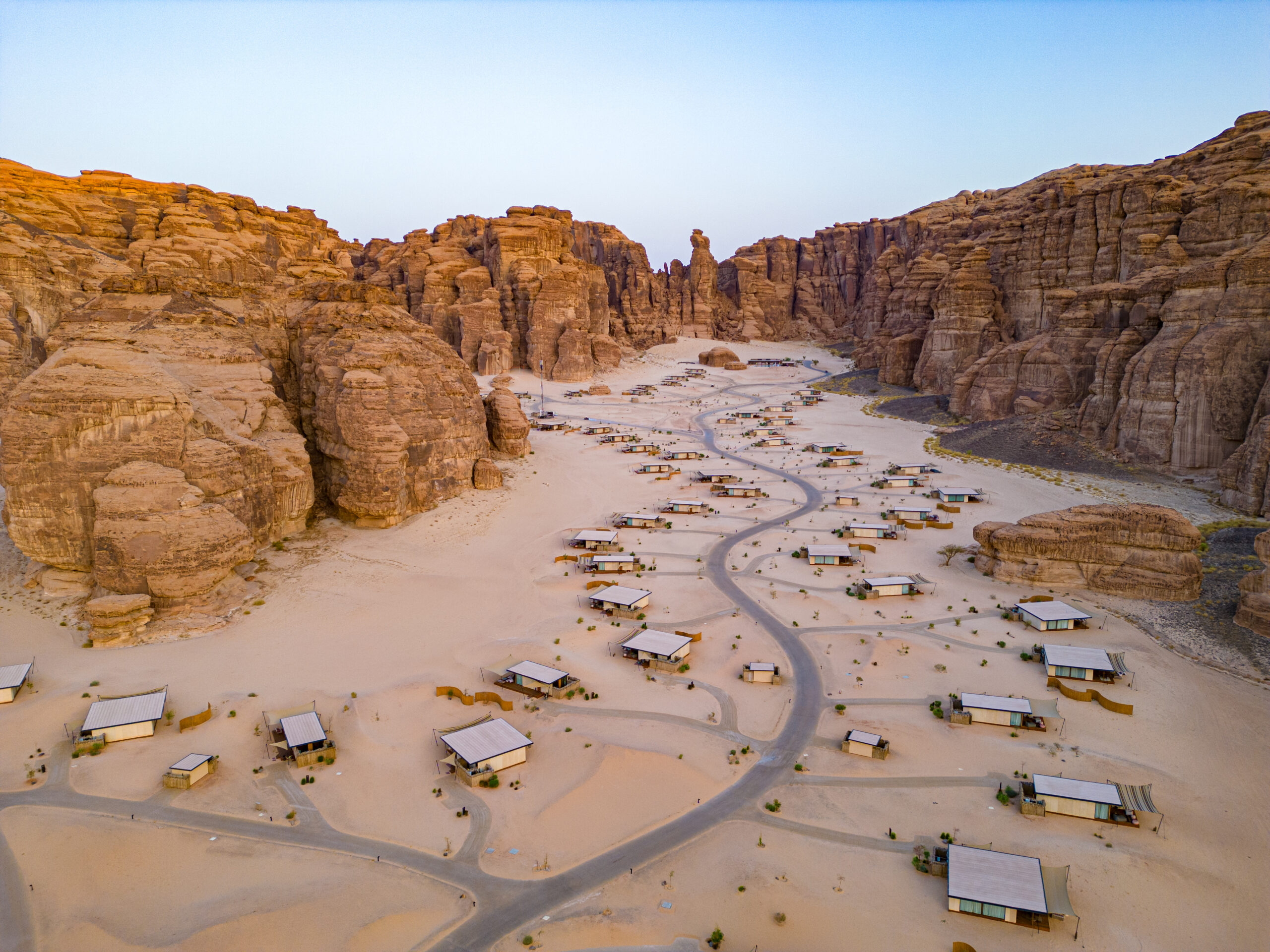
Aerial view of Our Habitas AlUla
A few things to keep in mind
Saudi Arabia remains a completely dry country, so wine at dinner or an after-dinner cocktail remains completely out of the question.
Currently, Alula International Airport receives two weekly, direct flights (each) from Doha/Qatar and Dubai. Otherwise, there are several daily domestic flights from Riyadh and Jeddah.
Visitors from dozens of countries can enter Saudi Arabia on an eVisa. The online application is quick and easy and approval often comes within minutes.
For more information click here.
Source: Travelweek



